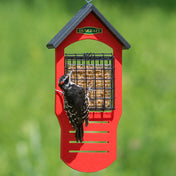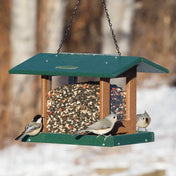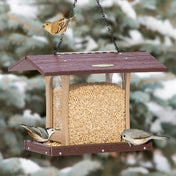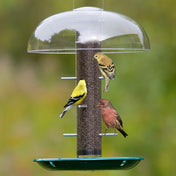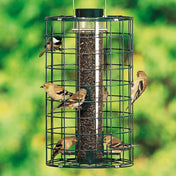Placing your bird feeders in the right spots can significantly increase bird activity in your yard.
It's not just about hanging them anywhere; strategic placement ensures birds feel safe and welcome. Here's how to optimize your feeder locations.
Proximity to Natural Shelter
Birds prefer feeders near natural cover like trees or shrubs, which offer quick escape routes from predators. Aim to place feeders within 10 to 15 feet of such cover. This distance provides safety without giving squirrels easy access.
Window Placement Considerations
To prevent bird collisions with windows, position feeders either very close (within 3 feet) or far away (more than 30 feet). Close placement reduces the chance of high-speed impacts, while distant placement gives birds time to recognize and avoid the glass.
Sunlight and Shade Balance
Birds are more active in areas with morning sun, which helps them warm up. However, too much direct sunlight, especially in the afternoon, can spoil seed and make feeders uncomfortable. Aim for a balance: morning sun with afternoon shade.
Predator and Pest Prevention
Keep feeders at least 5 feet off the ground to deter cats and other ground predators. Avoid placing feeders near dense bushes where predators can hide. Using baffles and squirrel-proof feeders can also help keep unwanted visitors away.
Visibility for You and the Birds
Place feeders where you can easily observe them, such as near windows or patios. This not only enhances your bird-watching experience but also allows you to monitor feeder conditions and refill them as needed.
Maintenance and Cleanliness
Regularly clean the area around feeders to prevent the spread of diseases. Position feeders in spots that are easy for you to access for cleaning and refilling.
Diversify Feeder Types and Locations
Different bird species have varying feeding habits. By offering a variety of feeders (e.g., tube, platform, suet) at different heights and locations, you can attract a wider range of birds.
By thoughtfully placing your bird feeders, you create a welcoming environment that encourages frequent visits from a variety of bird species.


